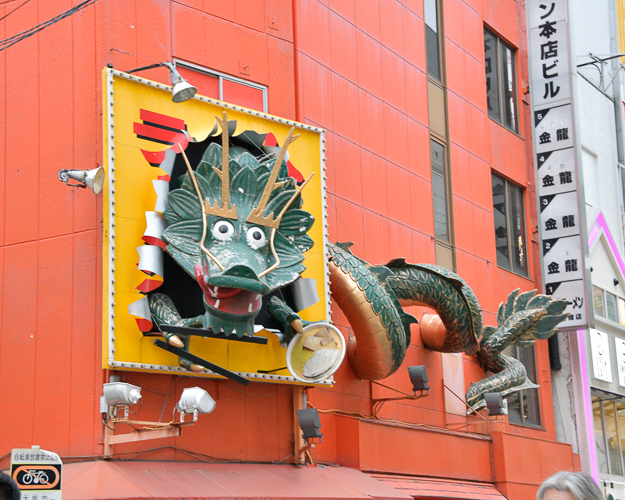December 11 and 12, 2023
Osaka is a 28-minute train ride from Kyoto, and yet it is a world away. This was a quick trip to Osaka to see the illuminations and try the street food. It was also my first trip to Osaka, and I was blown away. It is a vast and dense city, the second largest in Japan, and yet it is comfortable, people-scaled (despite the hundreds of very tall skyscrapers), and a real joy to walk around.
Umeda Sky Building
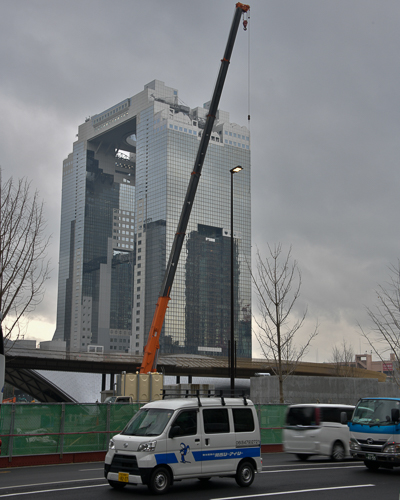
There is so much construction happening in Osaka around the Umeda Sky Building that this was the best I could capture of the whole building.
It was a surprise to me that the Umeda Sky Building is only the nineteenth-tallest building in Osaka. Nonetheless, it is Osaka’s most recognizable landmark. It consists of two 40-story towers that connect at their two uppermost stories, with bridges and an escalator crossing the wide atrium-like space in the center.
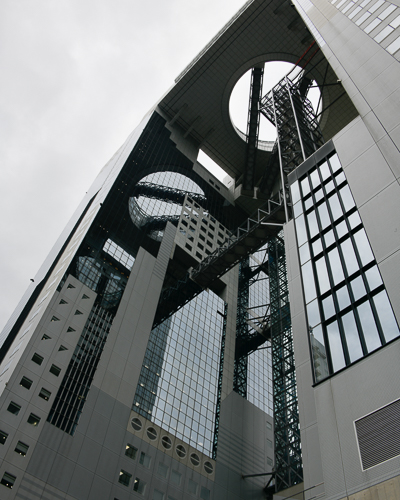
Looking up the middle from the ground.
The building was designed by Hiroshi Hara and completed in 1993. The observatory, which sits on the top between the two towers, was largely assembled at ground level before being hoisted up 568 feet and fixed into place.
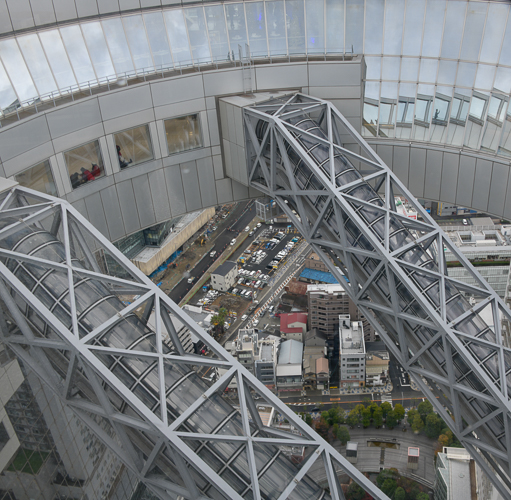
To get to the top, take a glass elevator from the third to the thirty-fifth floor and ride up these 147-foot-long escalators.
Views from the Umeda Sky Building
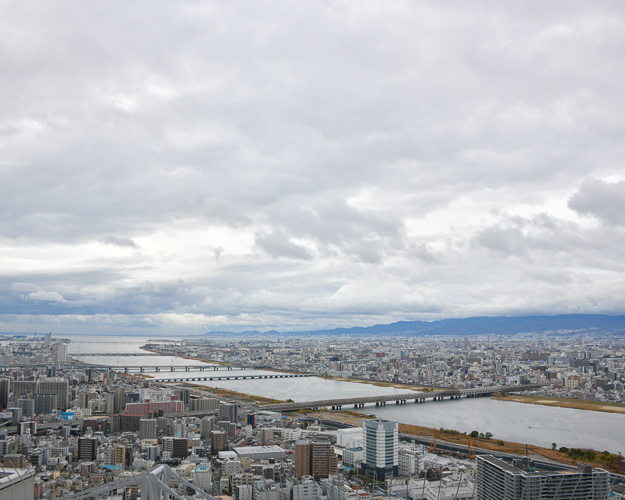
Osaka Bay and the Yoda River
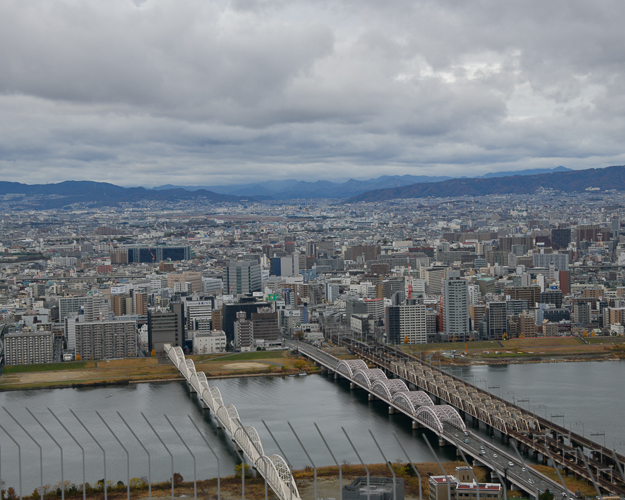
*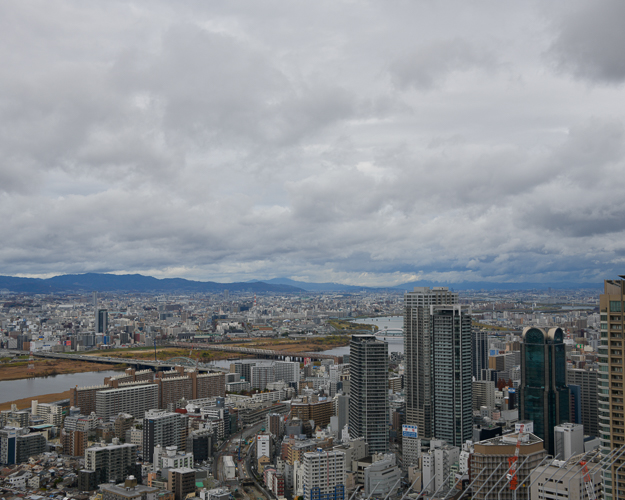
Chapel Goedele
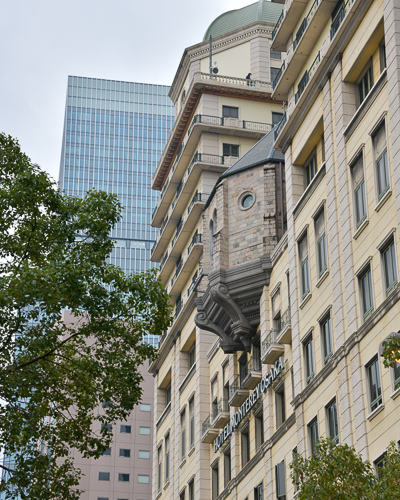
Chapel Goedele
That is the Chapel Goedele sticking out from the Monterey Hotel. It is a perfect re-creation of the 14th-century church that still stands today in Bruges, Belgium. This is in keeping with the hotel, whose interior is designed to resemble that of the Schönbrunn Palace of Vienna, despite being built in 2009. The hotel is owned by Hotel Monterey Group, and their corporate concept is that each hotel will re-create the history and charm of various cities from around the world.
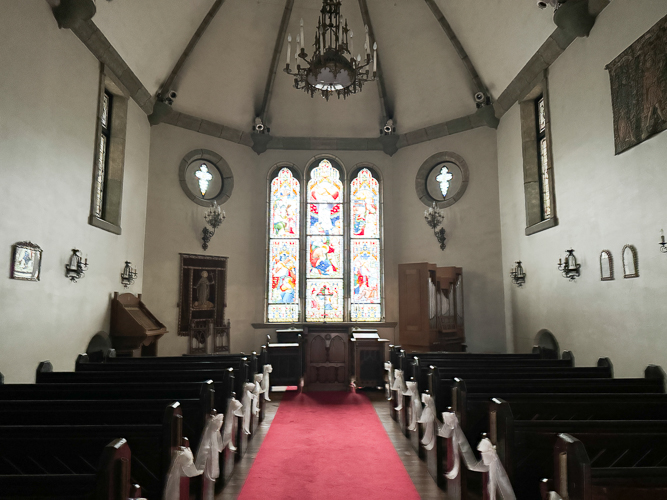
Inside the Chapel
Gate Tower Building

The Gate Tower Building
In the late 19th century, a wood and charcoal business called Suezawa Sangyo purchased the property rights to this plot. Over the years, their buildings on the land fell into disrepair. When they finally planned to redevelop the area in 1983, a new exit ramp connecting the Hanshin Expressway to downtown Osaka was already set to pass through. The landowners and the highway department fought for five years until they ultimately reached a solution – a traffic tunnel that goes through the building.
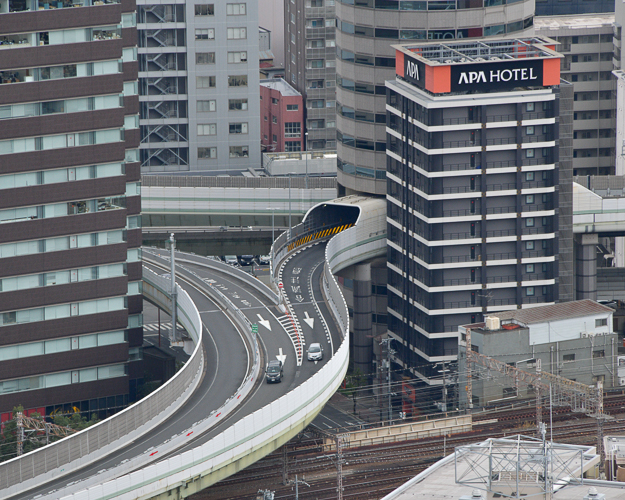
The tunnel through the Gate Tower Building
A Little History – Osaka Castle
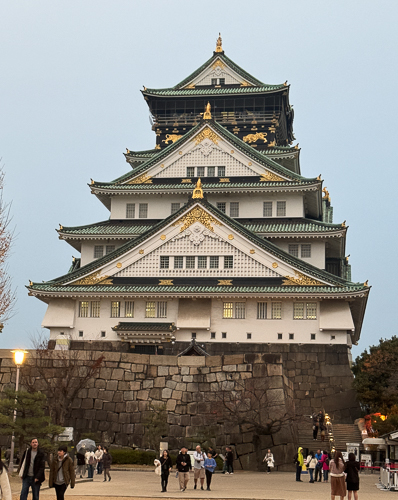
Osaka had a population of 3,252,340 in 1940. It was the most important industrial area in the Far East as one of the principal centers of heavy industry. It was noted for its shipbuilding, iron, and steel works.
The first allied bombing raid on Osaka resulted in 3,987 dead and 678 missing and destroyed 8.1 square miles.
During World War II, Osaka Castle was turned into a munitions factory and became one of the largest military armories in Japan, employing 60,000 workers. American bombing raids targeted the castle and destroyed 90% of the arsenal, killing 382 people working there.
The current castle building is a modern reconstruction completed in 1997. The exterior is a faithful reproduction, the interior is a modern museum and not a castle.
Theater
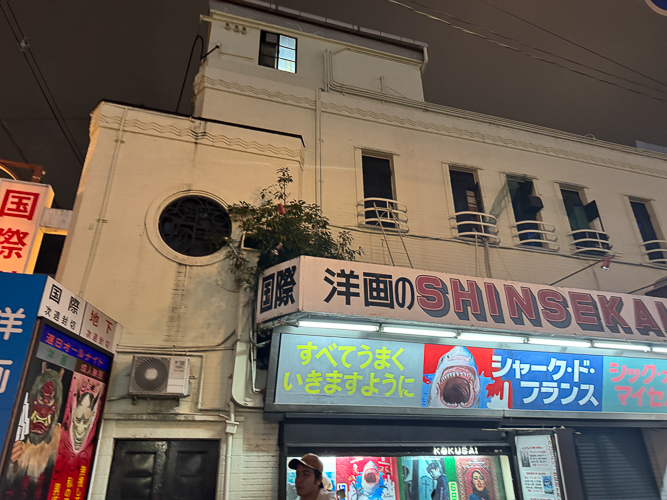
In the Shinsekai area is this somewhat deco building. It is the Kokusai movie theater. It is plastered with hand-painted movie posters that rotate every few weeks, a rarity nowadays. Upstairs are second-run Hollywood movies, while the space downstairs screens X-rated films. The structure was built in 1930 and originally functioned as a playhouse before being converted into a theater in 1950.
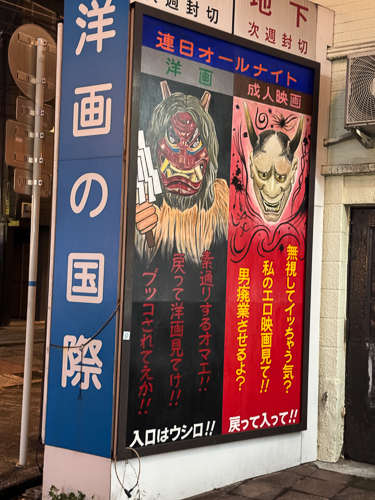
*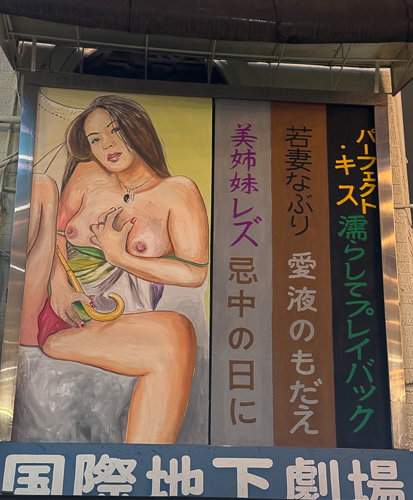
Around Town
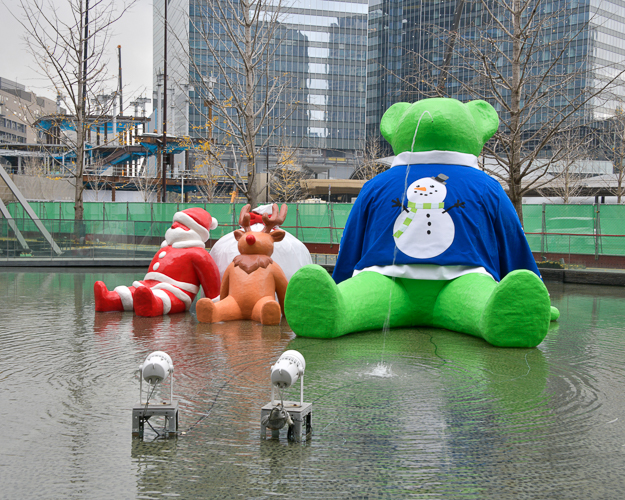
Ted Ibert by Ted Huber in front of the Grand Front Osaka Shopping and Business Mall near the Umeda Tower. He usually sits alone and is dressed seasonally.
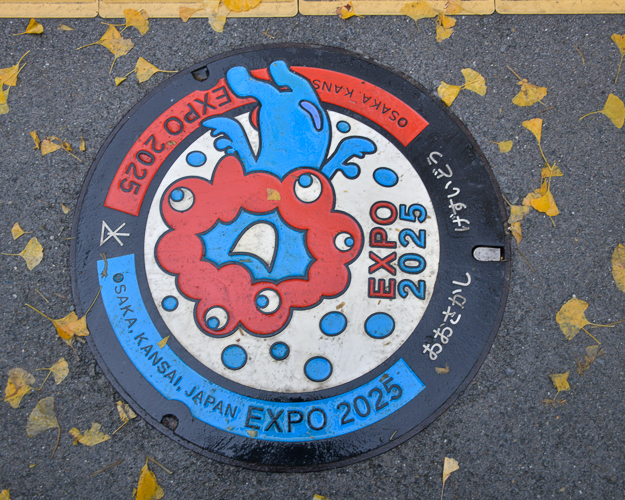
Osaka, Japan, will be the site of the 2025 World Expo, and they are already gearing up with advertising and manhole covers.
As I mentioned, I was here for the Illuminations and the food. Here is a very small collection of illuminations from Osaka Castle. The food will be another post.
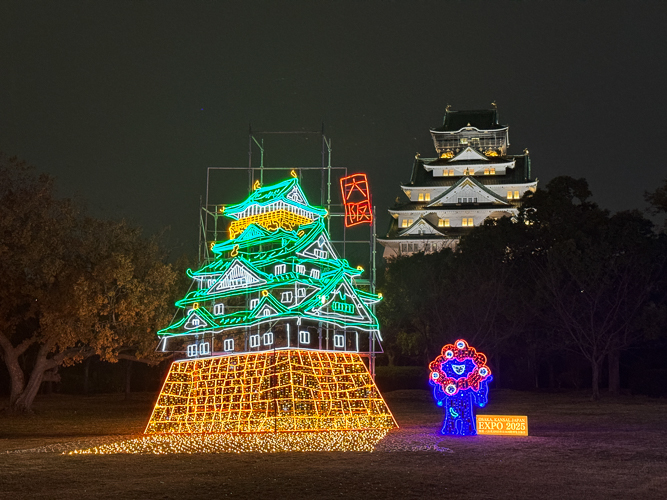 *
*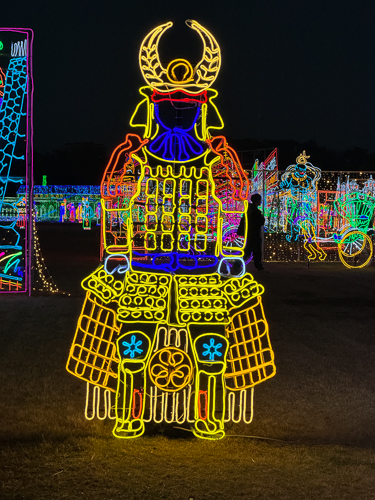
*
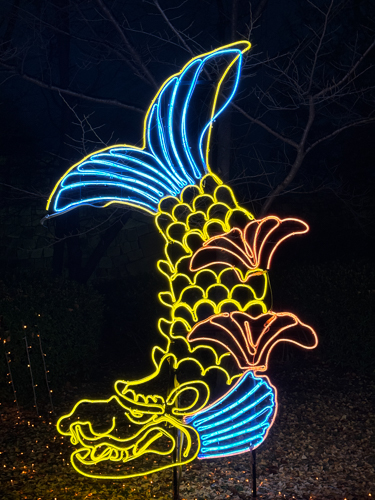
A Shachihoko
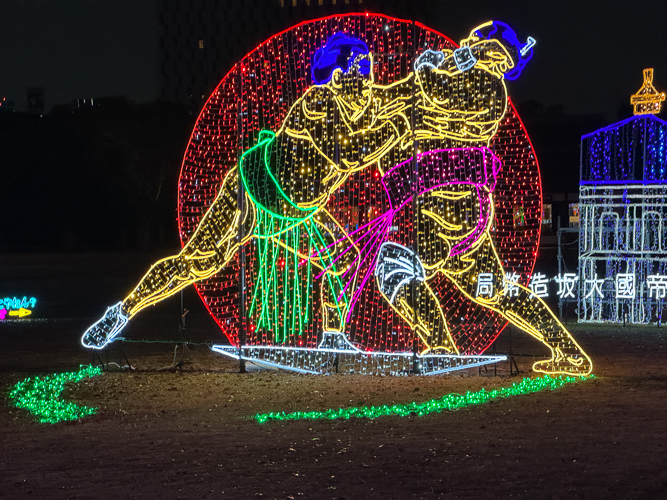 *
*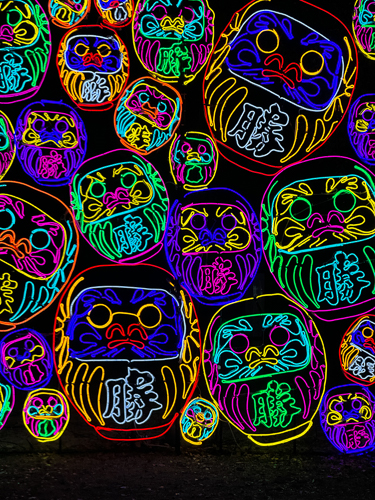 *
*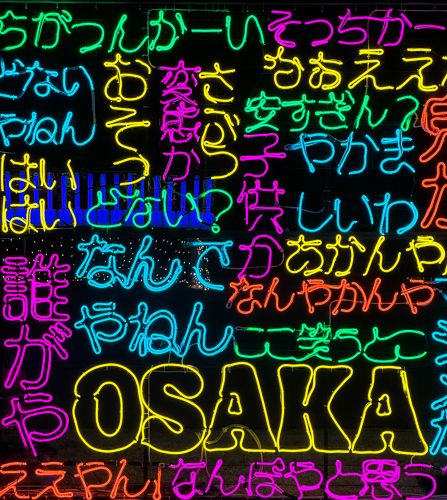
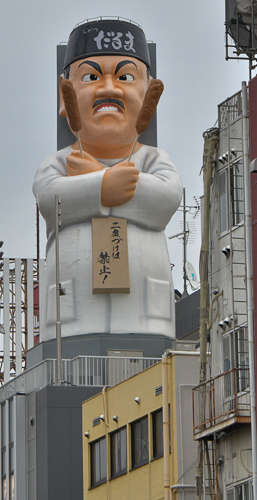
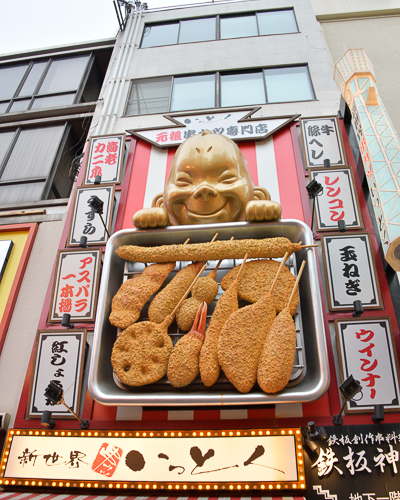
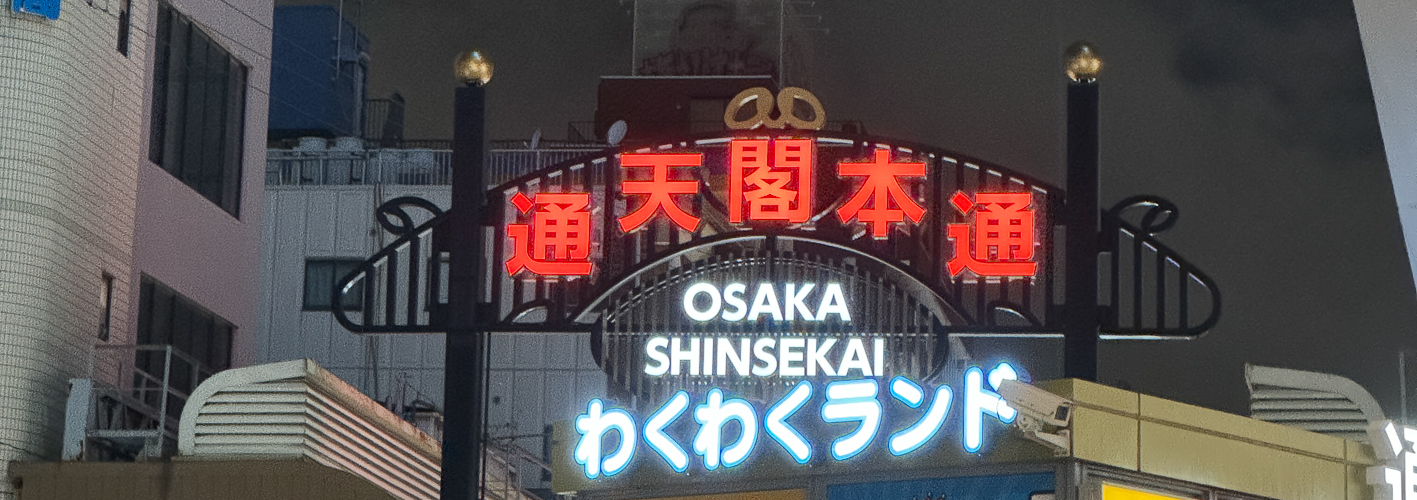

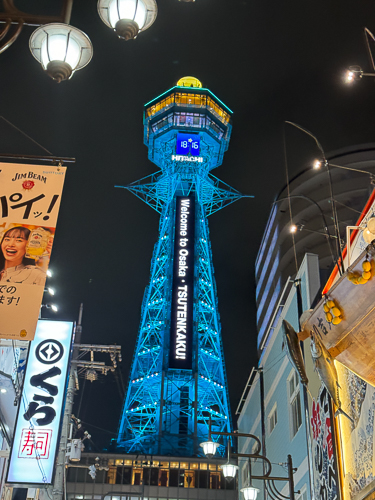
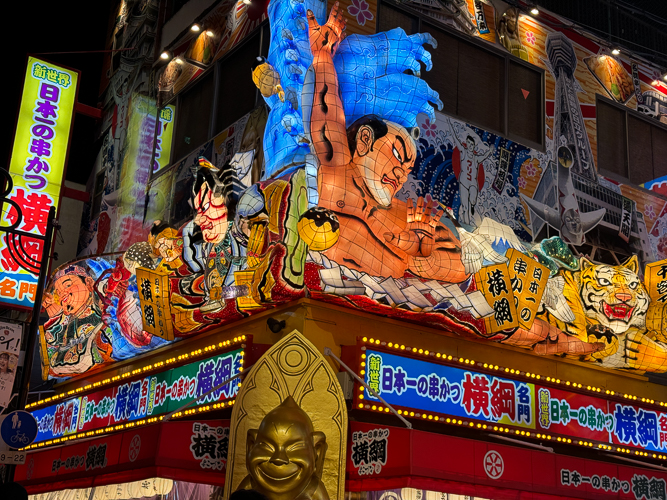
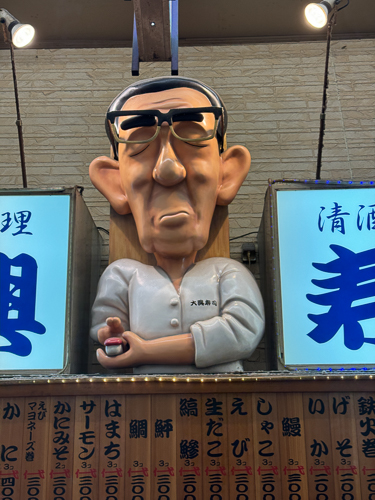
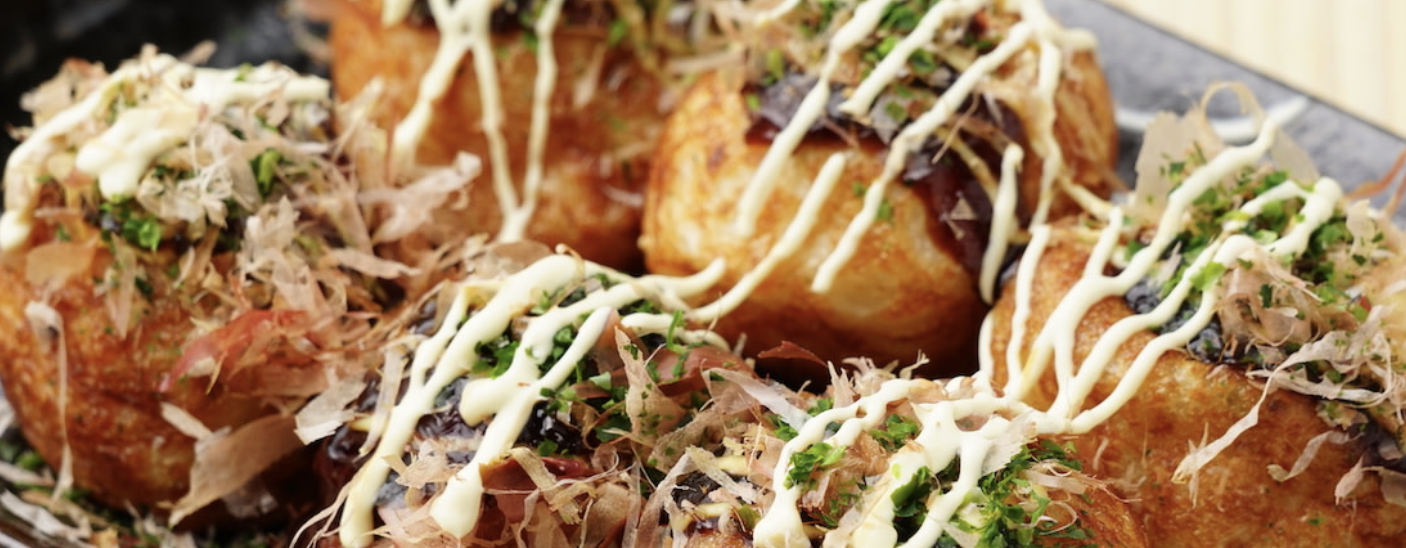
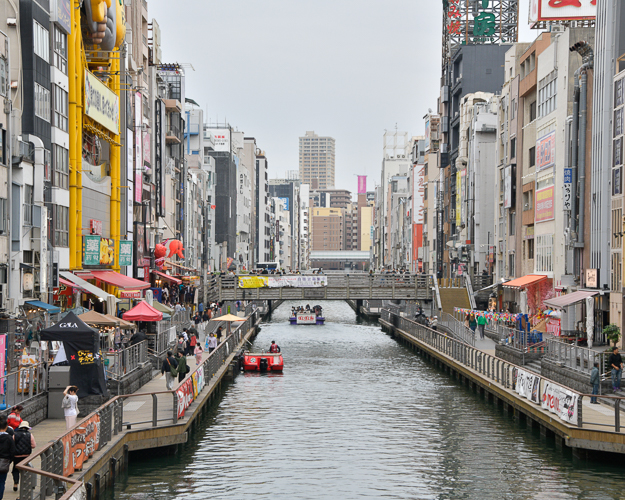
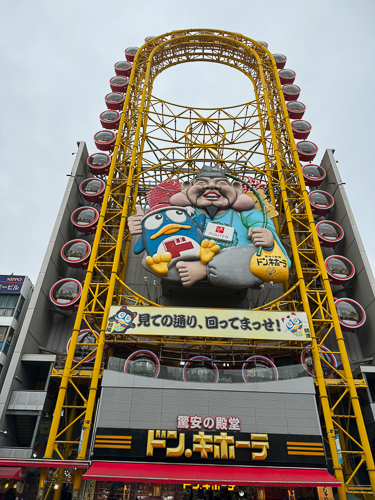
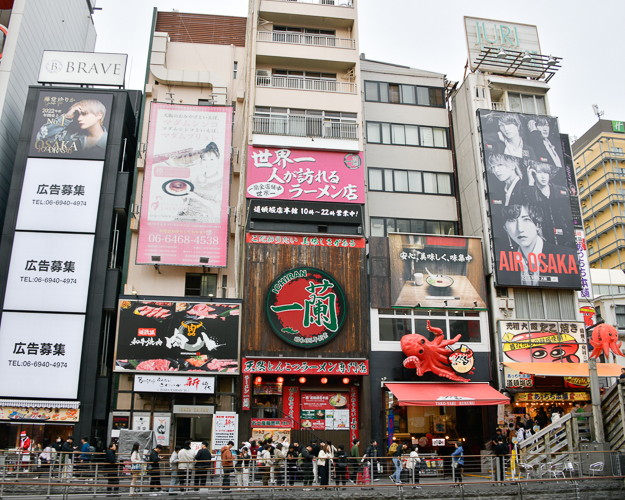
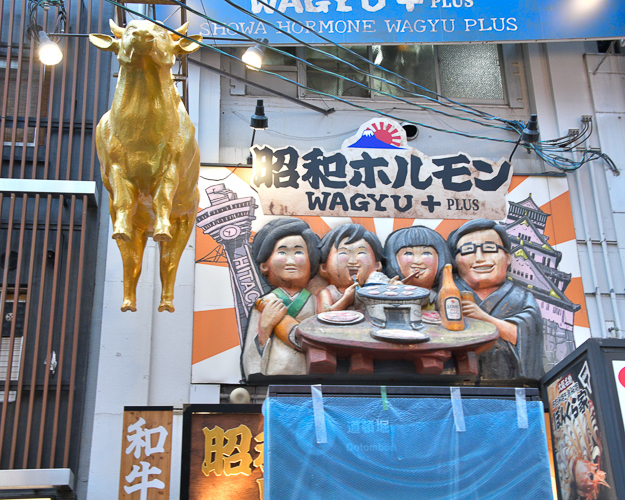 *
*